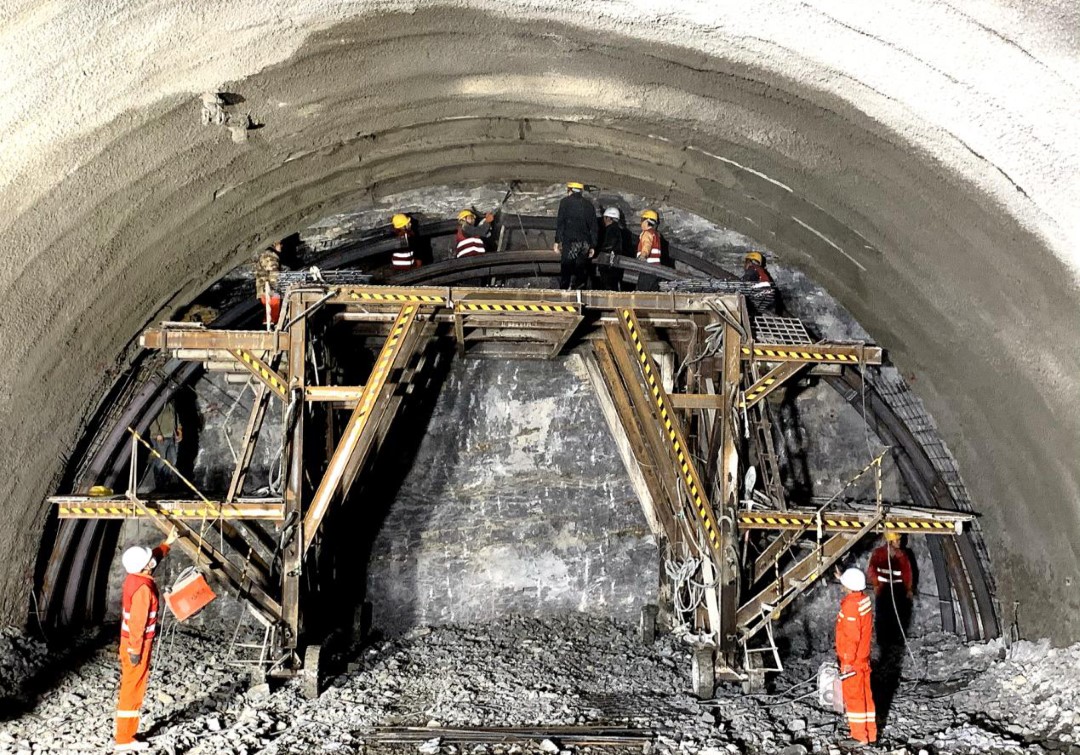What is Tunnelling Construction? Tunnelling construction refers to the engineering process of creating an underground passage through soil or rock by excavation and support methods. Tunnels are commonly built for roads, railways, subways, water supply, sewage, hydroelectric projects, and mining.It requires specialized equipment and techniques to ensure safety, stability, and efficiency.

Main Methods of Tunnelling:
1. Tunnel Boring Machine (TBM) Method
The modern "workhorse" of tunnelling, TBMs are large, automated machines that excavate, remove debris ("spoil"), and install permanent tunnel linings—all in a continuous process.
① Types of TBMs:
·Earth Pressure Balance (EPB) TBM: For soft, cohesive soils (e.g., clay). It balances pressure from surrounding soil to prevent cave-ins.
·Slurry Shield TBM: For loose, water-saturated soils (e.g., sand or gravel). It uses a thick "slurry" (bentonite + water) to stabilize the tunnel face and remove spoil.
·Hard Rock TBM: For solid rock formations (e.g., granite). It uses a rotating cutterhead with steel teeth to grind rock.
② Pros: Fast, low vibration, minimal surface disruption, safe.
③ Cons: High upfront cost, not flexible for changing geology.
2. Drill-and-Blast Method
A traditional technique for hard rock formations (e.g., mountain tunnels). It involves:
① Drilling hundreds of small holes into the rock face.
② Inserting explosives into the holes.
③ Detonating the explosives to break the rock.
④ Removing spoil and reinforcing the tunnel (with steel supports or shotcrete).
Pros: Low equipment cost, flexible for complex rock geology.
Cons: Slow, high vibration/noise, safety risks (collapses, flying debris), disruptive to surroundings.
3. Cut-and-Cover Method
Used for shallow tunnels (typically <10 meters deep) in urban areas (e.g., subway stations). It involves:
① Excavating a large trench from the surface.
② Building the tunnel structure (concrete walls/roof) inside the trench.
③ Backfilling the trench with soil and restoring the surface (roads, parks).
Pros: Simple, low cost, fast for short tunnels.
Cons: Disrupts surface traffic/activities, not suitable for deep tunnels.
4. Immersed Tube Tunnelling (ITT)
The primary method for underwater tunnels (e.g., cross-river or cross-harbor projects). It involves:
① Building prefabricated concrete tube segments (each 100–200 meters long) in a nearby dry dock.
② Floating the segments to the tunnel site and sinking them into a pre-dug trench on the seabed/riverbed.
③ Connecting the segments (using watertight seals) and backfilling the trench to protect the tunnel.
Pros: Less risky than underground tunnelling under water, faster than TBMs for long underwater spans.
Cons: Dependent on calm water conditions, requires precise alignment of segments.
5. New Austrian Tunnelling Method (NATM) / Sequential Excavation Method (SEM)
A flexible, "observational" method for complex geology (e.g., mixed soil and rock, or unstable ground). It relies on real-time monitoring of the tunnel face to adjust excavation and support:
① Excavate a small section of the tunnel (e.g., top heading first).
② Immediately reinforce the area with temporary support (shotcrete, steel mesh, or rock bolts) to stabilize the ground.
③ Repeat the process sequentially until the full tunnel cross-section is excavated.
④ Install a permanent concrete lining.
Pros: Adaptable to unexpected geology, low equipment cost.
Cons: Slow, requires skilled engineers for monitoring, higher safety risks if ground conditions change.
Tunnelling construction is a complex and highly technical engineering process that enables modern underground infrastructure. It combines geotechnical knowledge, advanced machinery, and precise engineering to create safe and durable tunnels for a wide range of purposes.





